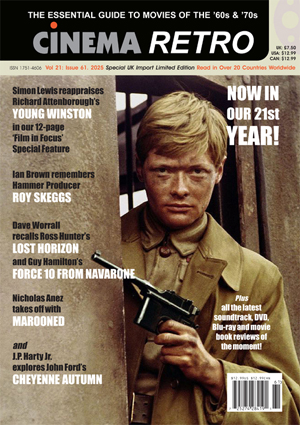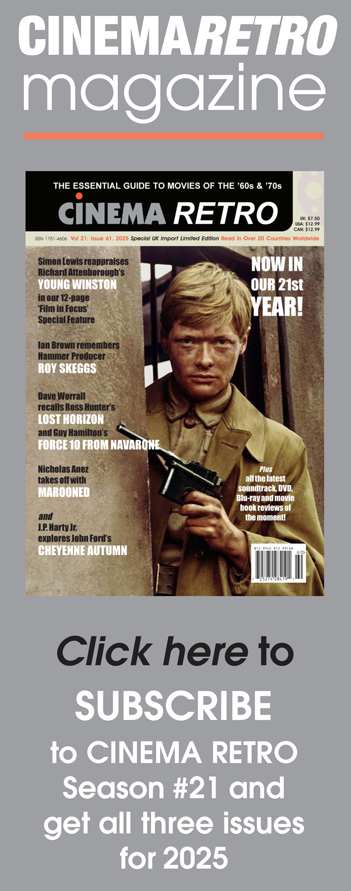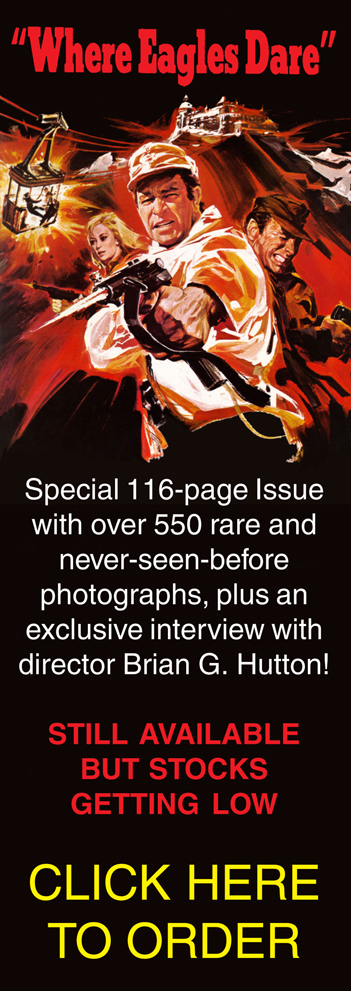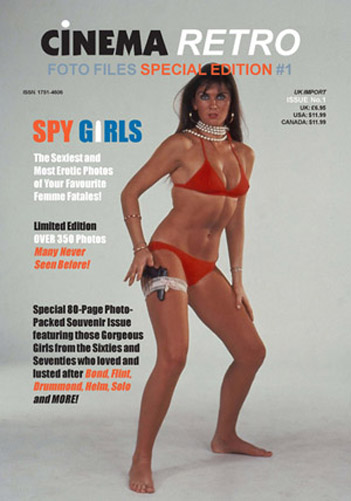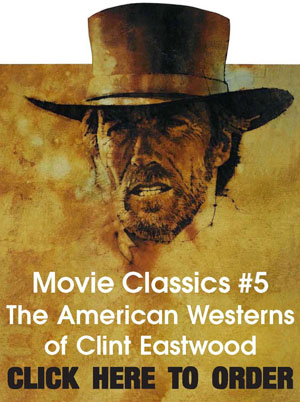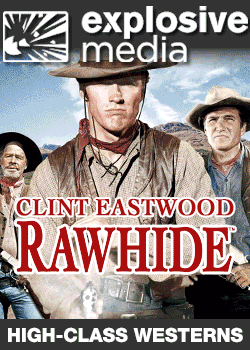
By Todd Garbarini
When
Steven Spielberg's Jaws burst onto
movie theatre screens on Wednesday, June 20, 1975 (during a time when movies
opened on a Wednesday), few were prepared for the impact it would have upon the
movie-going public and the American cinema in particular. Moderately budgeted and given a standard
shooting schedule, the film notoriously took nearly five months of grueling
work to get usable footage. The story behind
the making of one of Hollywood's most successful and greatest motion pictures
is also one of the most interesting in the annals of cinema history. While books have been written about the
subject of the making of Jaws, no one
has really addressed the making of the film in an in-depth, substantial way through
the use of rare photographs. All of that
has changed now, thanks to Matt Taylor, a writer/historian of Martha’s Vineyard,
Massachusetts, the location where the film was shot, and Jim Beller, a Jaws fan and the owner of the Jawscollector.com website, both of
whom worked tirelessly talking to the people who lived on the island and took
part in the making of this Hollywood classic.
Racking
the brains of Islanders, the name given to people who were born on Martha’s
Vineyard, and collecting thousands of photographs, many of them cleaned and
restored to beautiful and pristine condition, they have assembled a nearly
300-page book appropriately titled Jaws:
Memories from Martha's Vineyard, which has recently been released in both a
limited edition hardcover printing and in paperback format. The book is indubitably the final word on the
making of this spectacular masterpiece. Anyone who is a Jaws fanatic
needs to own it. Nearly 1,000
never-before-published photographs populate the book which is accompanied by a
beautifully written text by Mr. Taylor on just about every conceivable
behind-the-scenes-facet on the making of this film, presented in chronological
order. It encompasses the film’s
beginnings in December of 1973 when Production Designer Joe Alves made his initial
trek to Martha’s Vineyard to search for a suitable shooting location, up to and
including the film's release in June 1975. Few if any of the Islanders, as well as the actors and producers, could
have imagined the impact that Jaws
would have on fans over thirty years later. The little shark movie that was originally regarded by Universal
Pictures as a low-budget production not only became an action adventure
masterpiece but also put Steven Spielberg on the map to become one of the
world's greatest film producers and directors. Jaws is, bar none, the
Quint-essential (pun most definitely intended) summer movie, and should be re-released
theatrically every five years or so to give young audiences the opportunity to
experience its brilliance on a major motion picture screen where it was meant
to be seen.
Jaws: Memories from
Martha's Vineyard tells you more than you've ever wanted to
know and then some about the making of this great film. The amount of time, energy and research shows
on every single page. The book is
lavishly illustrated with color and black-and-white photographs and
storyboards, in addition to newspaper clippings from the island’s local
newspaper, the Vineyard Gazette, which gave virtually daily updates about the
making of the film. The limited
hardcover edition contains:
1″x1″
piece of the fiberglass hull of the Orca II (a.k.a., sinking Orca) used in Jaws with a note of authenticity from
owners Lynn and Susan Murphy.
A
DVD containing nine minutes of 8mm behind-the-scenes footage of the Jaws production shot and narrated by Islander
Carol Fligor.
Hardcover
and portfolio packaged in a unique special edition case.
Limited
to a series of 1000 numbered copies.
12″
x 10.5″, 296 pages.
More
than 1,000 full color and b/w images.
Jaws
is one of those rare films that I can watch over and over again. I’ve been known to watch it more than once in
one day. Likewise, Jaws: Memories from Martha's Vineyard is the kind of book that
keeps pulling me back to it, to pore over the photos and interviews, over and
over again. You can’t just pick it up
for a few minutes and then put it down. Like the water of Amity Long Island, the book draws you in, and if
you’re not careful you will realize that the few minutes you intended to read
through it suddenly extends to several hours. If this book is not the greatest book ever published about the making of
a motion picture, I simply don't know what is. It should set the standard for future publications on similar
classics. It stands as a testament to
not only a great motion picture, but as an authenticated record of what it
truly takes to make a film and realize that film through a camera lens and most
importantly, to be able to solve seemingly insurmountable odds and problems
that inevitably beset a film crew. After
all, time is money.
The
book can be ordered at the book’s
official site and will also be available in bookstores nationwide at the
end of September 2011.
Read
on for Cinema Retro’s interview with the gentlemen who created this astonishingly
beautiful book.
Todd
Garbarini: When did each of you see Jaws for the first time?
Jim
Beller: I first heard about Jaws towards the end of the school
year. I was nine years-old and it was
the last day of school, and I was just hanging out with my friends. I walked by my teacher's desk and she had the
new issue of Time Magazine on it. The
cover featured a large shark on the cover with the words “Super Shark†in big
letters. I remember thinking, What's this? Now, I was really into horror movies back
then, like the Universal horror films, and I loved Christopher Lee as Dracula
in the Hammer films. My teacher told me
that this news film was about a monster shark coming into the community and
eating people! I just remembered going
home and begging my parents to take me to see it! They were going to see it that night to make
sure that it was okay for me to see it, so the following weekend they took my
friends and me to see it. People thought
that my mother was crazy to take me to see this movie. Her response to that was, “Well, if he can
sit through all of those Christopher Lee Dracula movies, then he should have no
problem sitting through this movie!â€
Matt
Taylor: I saw the movie for the first time in 1979, at the Capawock Theater in
Vineyard Haven, which was its final theatrical run before being aired on
network television later that fall. I
was absolutely mesmerized. For me, being just seven years-old, the movie played
almost like a documentary because I recognized so many of the faces from around
town, and of course, swam daily at all of the beaches you see in the
movie. It was funny because the studio
left the Orca II on the island when they finished shooting. It was just rotting
on the beach with all of the effects barges and things. I saw it practically
every day as a kid. Most people, when they’d come to Martha’s Vineyard, would
say, “Look! There’s the Orca from Jaws!â€
For me, when I saw the movie for the
first time, I thought, Wow! There’s the
boat that’s on the beach! I also
have this pretty vivid memory of my legs kicking involuntarily at the seat in
front of me during the scene where Quint is sliding into the mouth of the
shark. I haven’t been affected by a
movie like that since then.
JB: Since I saw the film, I've just been collecting
Jaws memorabilia. I run the Jawscollector.com website. My entire collection of Jaws memorabilia is up there. I haven't been able to update it lately because of my time spent working
on the book. So, over the years, I've
collected many magazine articles and books written about the film. At the time, I really thought I knew a lot
about the making of the film. Several
great documentaries have been made about it over the years, such as Laurent
Bouzereau’s documentary from the laserdisc and DVD of Jaws. I got to thinking that it would be great to make a book
illustrating the making of it from the standpoint of the people who lived on
Martha’s Vineyard and who were involved in appearing in the film and those who
took photos while on the set. I started
doing my own research. I talked to
friends of mine and I thought, There must
be people still on the island who have photographs of when Jaws was filmed. Edith Blake, who wrote the book On Location.....on Martha's Vineyard: The
Making of the Movie "Jaws", has a lot of material herself. She was one of the first people I approached
about this project. I wanted to tell the
story about the making of the film from a different perspective than that of
the filmmakers, in particular the Islanders, the people on Martha's Vineyard
who lived there and watched them filming and who actually appeared in the
movie. Originally, I just wanted to tell
the story of the making of the film through photographs only. When I met Matt (Taylor), he agreed and being
that he was an Islander, he was very successful in getting people to open up
and talk about their experiences. I live
in Rhode Island, so I was not from the island. I mean, he was getting all these incredible stories from these people
that I just couldn’t believe! There were
all of these interesting anecdotes that I just never knew about. He made this book bigger than I could have
ever imagined.
TG:
Was it easy or difficult to for the
Islanders to find the photos that they had?
JB: An interesting story that he told me was how
he was going through boxes and boxes of photographs in one person's attic. This person knew that she had photos taken of
the filming, but she didn't know where they were. He showed his love for this project that day
when he spent hours in the attic during a hot summer month looking for that
box. Naturally, it was the last box that
he looked in that the photos resided in!
TG:
This doesn't even sound like a job. It
sounds more like you were two kids on a treasure hunt looking for something you
both really wanted.
JB: Yes, that's exactly what it was like! And you know, this project started off with
Matt talking to one person and getting photos and information from them, and
then that person referred him to someone else, and so the whole process just
snowballed.
MT:
Jim approached me shortly after I had moved back to my home on Martha’s
Vineyard to begin shooting my first documentary, Vineyard Roots, the story and history of agriculture on the island,
and of the struggle, currently, to preserve the island’s traditional and
bucolic way of life. Jim had begun
collecting some locally-taken photos of the Jaws
production, and was looking for someone to help him take his idea for creating
a book with all of this material to the next level. I lived on the island, knew
lots of people who had been involved with the Jaws production, and so once I signed on with Jim, I put my film on
the back-burner, and we just began combing the island from one end to the
other, acquiring each and every story and photo from the Jaws production we could find. Finding these great, old, locally-taken
photos of the production was the most exciting part - cleaning all the mold,
coffee stains and wrinkles out of them was the most tedious!
TG:
What was the most challenging aspect of making the book?
MT:
Piecing together the production timeline and working out the design. Ours is
the first book to follow the production schedule on a day-to-day basis, from
May 2, 1974, through the last day of shooting, which was September 19, 1974.
The majority of information was attained from local newspaper archives. The
local papers on the island covered the land portions of the filming quite
extensively. However, they kind of dropped back and forgot the whole thing once
Spielberg and company went to sea to film the third act. So I needed to figure
out a way to piece all of the photos and stories from that portion of the
production together in their proper chronological order. Carl Gottlieb, who
co-wrote the screenplay with Peter Benchley, provided me with the dates I
needed in the form of an original, 1974 production log; the actual Jaws log. We have acquired the photos of numerous local
participants of the Jaws production. Due
to the island’s geographic isolation, there were hundreds of locals who were
involved with the making of the movie, both in front of, and behind the camera.
So, there was no shortage of locals who had behind-the-scenes-photos and all
kinds of great stories. I also interviewed, quite extensively, Production
Designer Joe Alves, Screenwriter Carl Gottlieb, Production Executive Bill
Gilmore, and Location Casting Director Shari Rhodes, who were the Universal
personnel most involved with the Islanders who were part of the production. We
found literally hundreds of great, never-before-published photos of the Jaws production - tons of great stuff
that most people have never seen or heard before.
TG:
How long from start to finish did it take to put this book together?
JB: My involvement began in 2005. By the time I met Matt and he got involved
full-time, it was about 2007/2008. Matt
really worked on this fifteen hours a day, seven days a week and it shows.
MT:
Yes, I began working on the book full-time on Thanksgiving morning of 2007, and
finished just before Christmas of 2010, so a little over three years for me.
TG:
What did you encounter in making this book that you didn't expect to see? Were there any surprises?
JB: Yes, one of my favorites is the finding of
photographs which depict the Orca III, which is just a mockup of the cabin that
the shark eats his way into at the end of the film. There were a number of shots that we
uncovered of them shooting the sequence several times. I never expected to see that. Ted Grossman was the stuntman made up to look
like Roy Scheider for that scene.
TG: Oh wow, I didn't know that. He played the ill-fated Boy Scout leader in
the estuary. It looked like Roy Scheider
in the movie the whole time!
MT:
We had been working for the better part of a year when Lynn and Susan Murphy
became involved. Lynn is a Vineyard marine mechanic who was hired to work on
the sharks, particularly the sea sled shark - the one that was towed behind his
boat. He and his wife, Susan, who was his first mate that summer, spent more
time on the Jaws set than any other Islander
involved with the making of the movie. Once they signed on, I found out Susan
had taken something like four hundred photos on-set that summer with her
Instamatic camera. I didn’t know that when we first began speaking with them. I
thought we’d maybe get a few interesting stories out of them and maybe a few
photos of the shark. She handed me their photo albums, which are unbelievable,
and pretty much said, “Here you go. Have
fun!†Without the Murphy’s involvement,
I don’t think we would have had much of a book.
JB: Something else I didn't realize, and people
will see this in the photographs in the book, is just how close the actors and
crew really worked to the island of Martha's Vineyard while they were
shooting. In the film they look like
they're miles and miles away from the island, but in reality they were actually
very close to land.
TG: Do you recall the theatre that you first saw Jaws in, Jim?
JB: On sure, it was at the Charles Theater on
Cambridge Street in Boston. It was a
huge theater, and they had curtains that would open when the movie began and
would close when the film finished. I
saw The Empire Strikes Back there
later on, so many great films. Jaws was also very first movie where I
saw lines and lines of people waiting to get into the theater. I had never seen before. It used to be an event going to see a movie
like that. There was the anticipation of
waiting to get in to see a movie. I
think that the last truly great decade for American movies was the 1970s. It certainly was the most original
decade. This was a time where directors
were really taking a chance on new ideas. What really annoys me about films nowadays are remakes that they make of
past hit films, and then they flop! I
remember talking to Joe Alves about this and he said that they should really go
back and remake the flops into better, successful movies. I don't see anything wrong with re-releasing
older movies on the big screen. When I
was a kid, and you can probably attest to this too, they used to re-issue older
movies on the big screen.
TG: Yes, in fact that was how I saw a lot of the
films that I ended up seeing. It was a
fairly common practice. The Seven-Ups was featured on a double
bill with The French Connection as
the second feature. They even printed
movie posters for this engagement. Of
course, the Walt Disney films were always doubled up. In 1977 I saw Herbie Goes to Monte Carlo on a double bill with The Gnome Mobile at the Middlesex Mall
Cinema. I remember A Bridge Too Far was playing next door. In 1978 my grandparents took my sister and I
to the Manville Cinema to see Close
Encounters of the Third Kind and it was playing right after Charlotte's Web of all things! We saw the films as a double feature. As far as Jaws
is concerned, it's one of those films that should be re-released every couple
of years.
JB:
You've seen on the big screen, right?
TG:
Not originally. I first saw it at my
friend Dave’s house in Staten Island, NY in 1984. He had the RCA Capacitance Electronic Disc
home video system. I remember that Jaws was the first MCA Discovision
laserdisc title, and that was released in 1978. I did see Jaws at a screening
in 1997 at Radio City Music Hall. Peter
Benchley introduced the film.
JB: Oh, yes! I was there. And seeing it on the
big screen is completely different than seeing it on television or on video.
TG:
Absolutely. There's just no
comparison. Movies should always be seen
in a movie theater, especially Jaws
because it just grabs you by the throat and doesn't let go. While it's great to see these movies
letterboxed on large-screen televisions in the comfort of our own homes, you
really need to see a movie like this projected on a screen that's 60 x 30 feet
in dimension. I was ten years-old when I
saw Superman: The Movie during its
initial release. It had the most
stunning impact on me seeing that in a movie theater. The opening title credits sequence alone
which runs nearly five minutes was absolutely riveting. I remember they sold a movie program for it
in the lobby for a dollar-fifty.
JB:
Yes, those are definitely movies that need to be seen on the big screen. The sequence in Jurassic Park, where the two kids and the two adults are in the
jeep and it's raining outside and T. Rex comes and attacks them in the car -
that is one of the scariest sequences in all of film history.
TG:
When the little boy is looking at the puddle and sees that impact tremor,
followed by the stomping of the T. Rex, that's akin to seeing the fin or the
approach of the shark from underwater in Jaws. Spielberg is brilliant in that way. He knows exactly how to pull the strings on
the audience. I waited outside of the
Ziegfeld Theater at the premiere of War
of the Worlds in 2005 for eight hours and got Spielberg’s autograph. I wanted to get a photo with him, but they
rushed him inside. When I was in Los
Angeles in November 2008 I stopped for lunch at Milky Way, the restaurant owned
and run by Spielberg's mother, Leah Adler. I sat and talked with her for about ten minutes, gushing like a little
kid about the impact that her son's movies have had on my life. When I was done, she just looked at me and
said, “I don't know where the hell he came from.†I couldn't help but laugh out loud. The hallway leading to the restroom is
flanked with framed movie posters of his best-known films. It was great meeting her, and I was hoping
with my fingers crossed that her son would walk in for lunch, but he didn’t. She was very gracious and I got a photo with
her, too.
JB:
Wow! That's great that you met them and it sounds like you had a great time.
TG:
It was so much fun. There is a handful of movies that I can watch
over and over and over again and never get tired of, and Jaws is one of those movies. What do you feel is the secret to this film’s success as a dramatically
thrilling motion picture?
JB:
That's easy. It's a movie that has
everything: it’s has drama, it has suspense, it's a love story, it has elements
of comedy, and despite the fact that they had so many problems while they were
making it, it all came together perfectly at the end.
TG:
I agree. I don't really even think of Jaws as a movie. I think of it more as a vicarious experience,
an adventure that the audience goes on with the main characters.
JB:
In addition to that, the film possesses top-notch direction. I mean, for a 26-year-old director who is
making the very first movie to ever be shot completely out in the water to the
extent that Jaws was, and to have to
suffer through all of the stress and malfunctioning of the shark and problems
that occurred on the set, it's really extraordinary. You cannot believe the amount of stress that
Spielberg was under while he was making this movie. That really came into focus while we were
talking to people on the island.
TG:
What can readers find in the hardcover version that is not in the paperback
version?
JB:
The hardcover version comes with a piece of the actual Orca II boat prop (the
sinkable boat at the end) that we got from Lynn & Susan Murphy who has
owned the prop for years. Also, one of
the Islanders, Carol Fligor, shot home movies of the filming and the hardcover
version features a DVD with the nine minutes of silent footage that she
shot. So, those were a real find!

CLICK HERE TO ORDER SOFTCOVER EDITION FROM AMAZON

